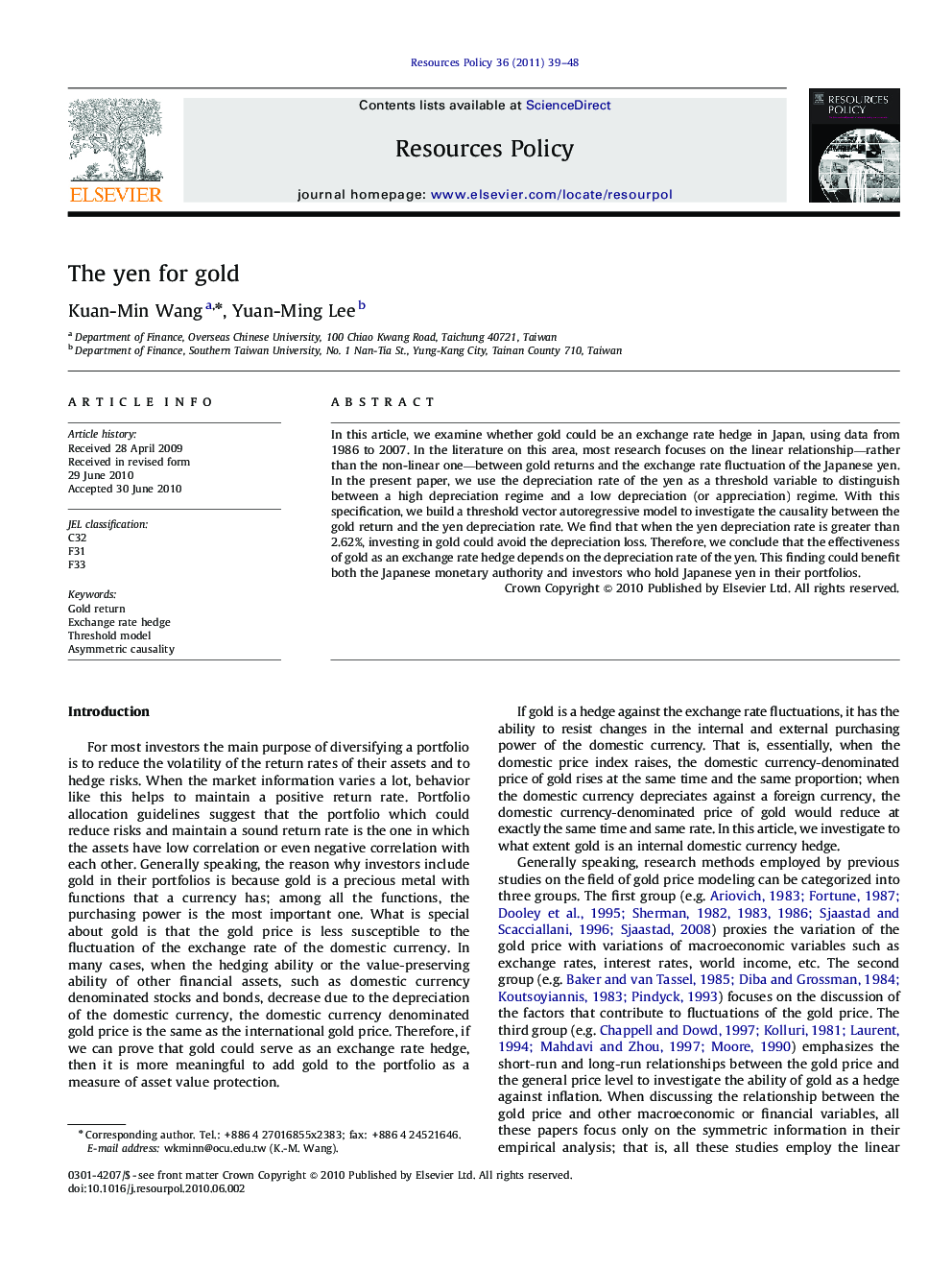| Article ID | Journal | Published Year | Pages | File Type |
|---|---|---|---|---|
| 986178 | Resources Policy | 2011 | 10 Pages |
In this article, we examine whether gold could be an exchange rate hedge in Japan, using data from 1986 to 2007. In the literature on this area, most research focuses on the linear relationship—rather than the non-linear one—between gold returns and the exchange rate fluctuation of the Japanese yen. In the present paper, we use the depreciation rate of the yen as a threshold variable to distinguish between a high depreciation regime and a low depreciation (or appreciation) regime. With this specification, we build a threshold vector autoregressive model to investigate the causality between the gold return and the yen depreciation rate. We find that when the yen depreciation rate is greater than 2.62%, investing in gold could avoid the depreciation loss. Therefore, we conclude that the effectiveness of gold as an exchange rate hedge depends on the depreciation rate of the yen. This finding could benefit both the Japanese monetary authority and investors who hold Japanese yen in their portfolios.
